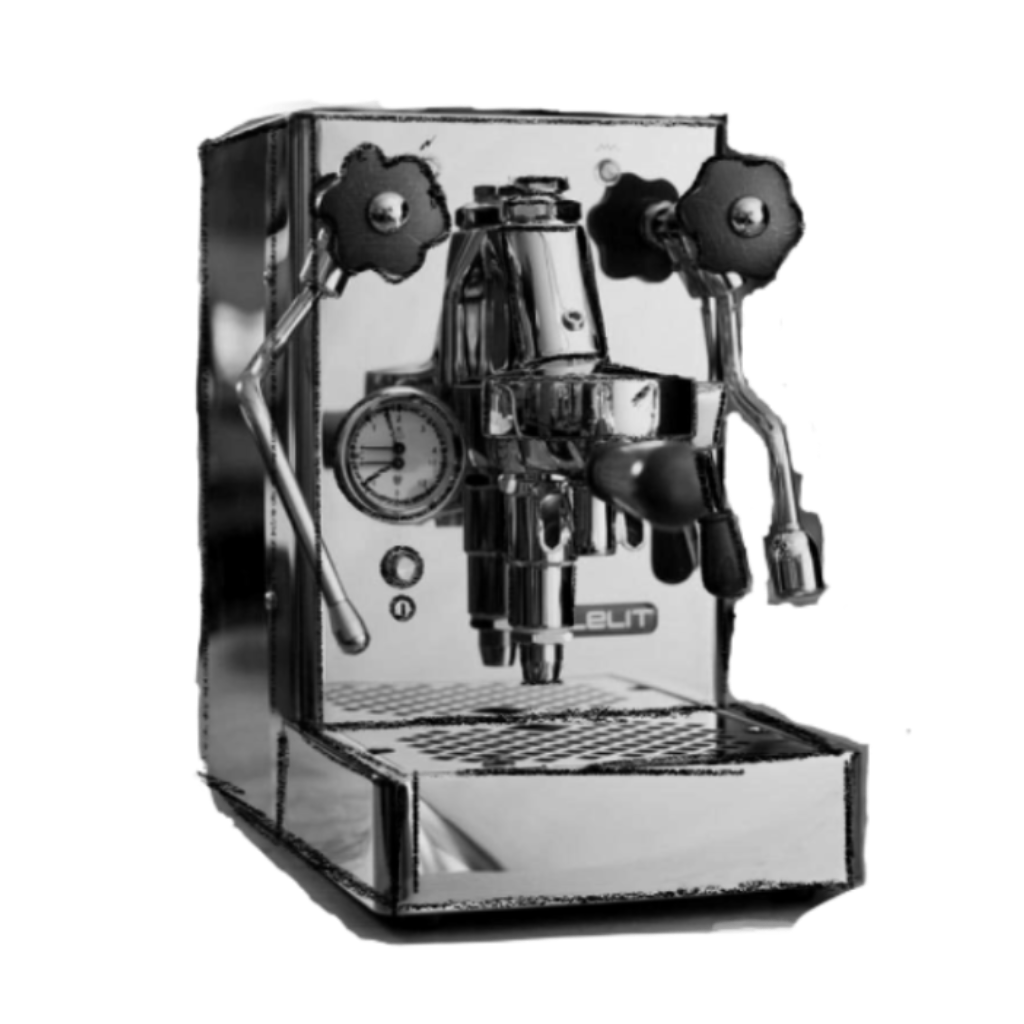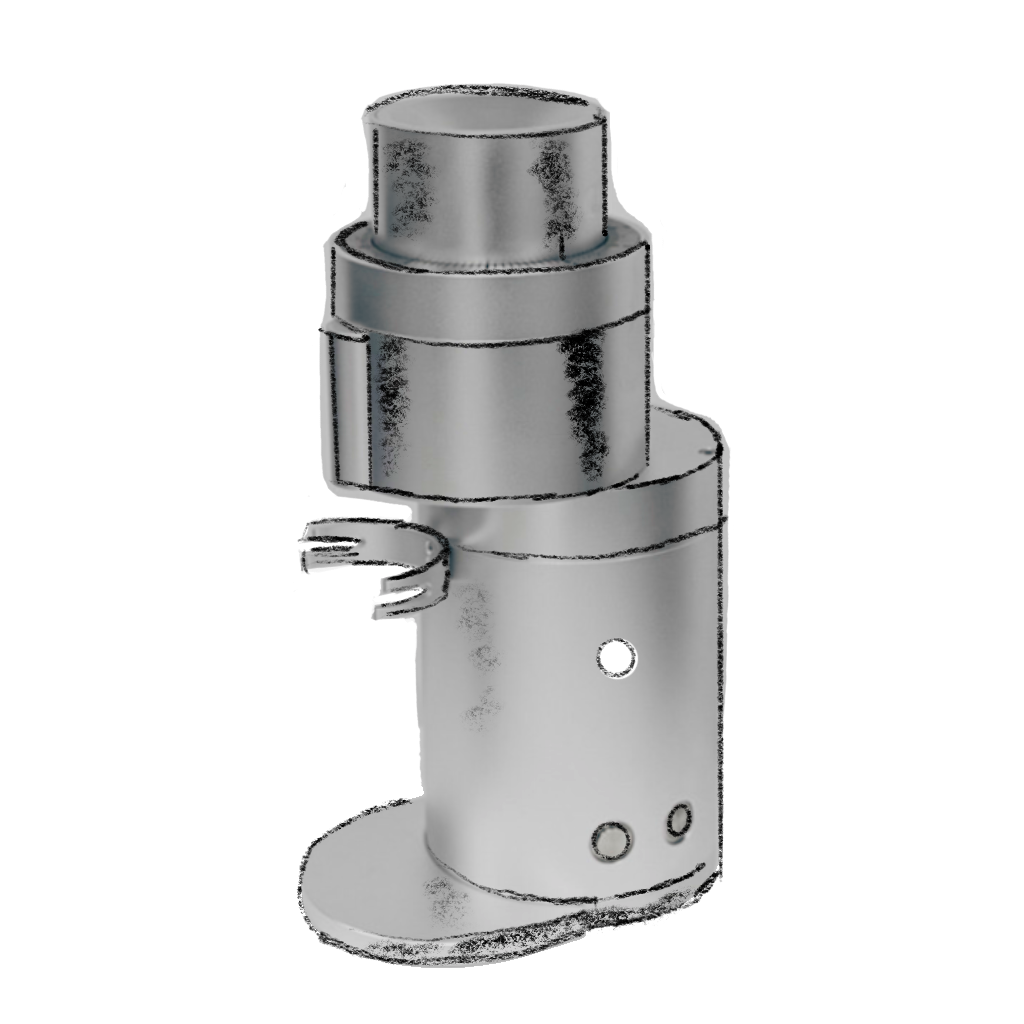All About Espresso: The Portafilter (Updated: 2025)

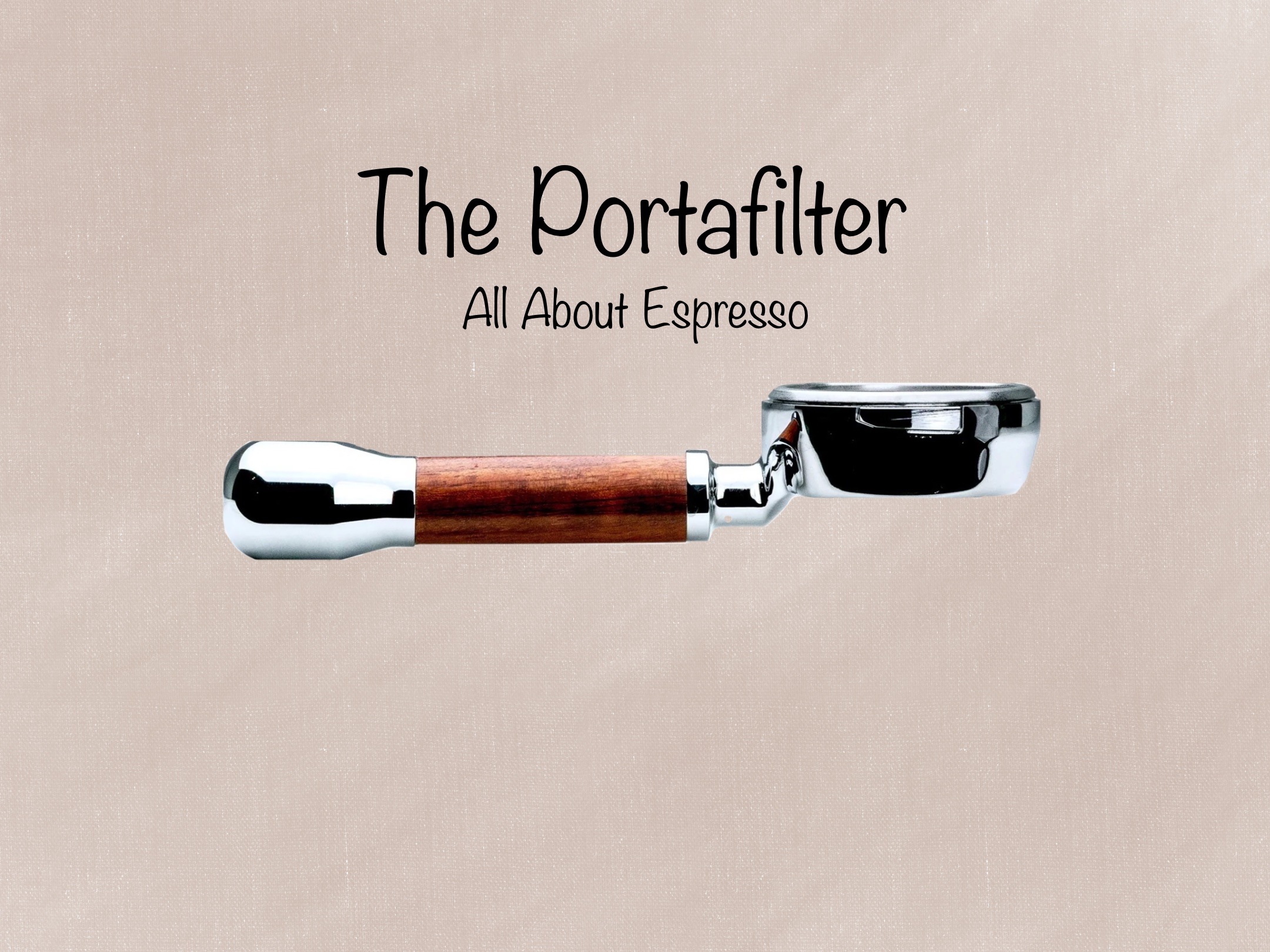
Introduction
The If you've ever seen a barista hustling about a cafe from grinder to machine and back again, they almost always have something in their hand. Sure, sometimes it's your latte they just finished pouring, but more often than not, it's a key piece of an espresso setup called a portafilter.
In this 'All About Espresso,' we'll take a look at the three parts of the portafilter, look at the different types of portafilers out there, and explain how to use a portafilter and how it fits into the bigger espresso picture.
Let's get brewing!
Table of Contents
Quick Recommendation List
Compatable
Style
Price
Quick Link
What is a Portafilter?
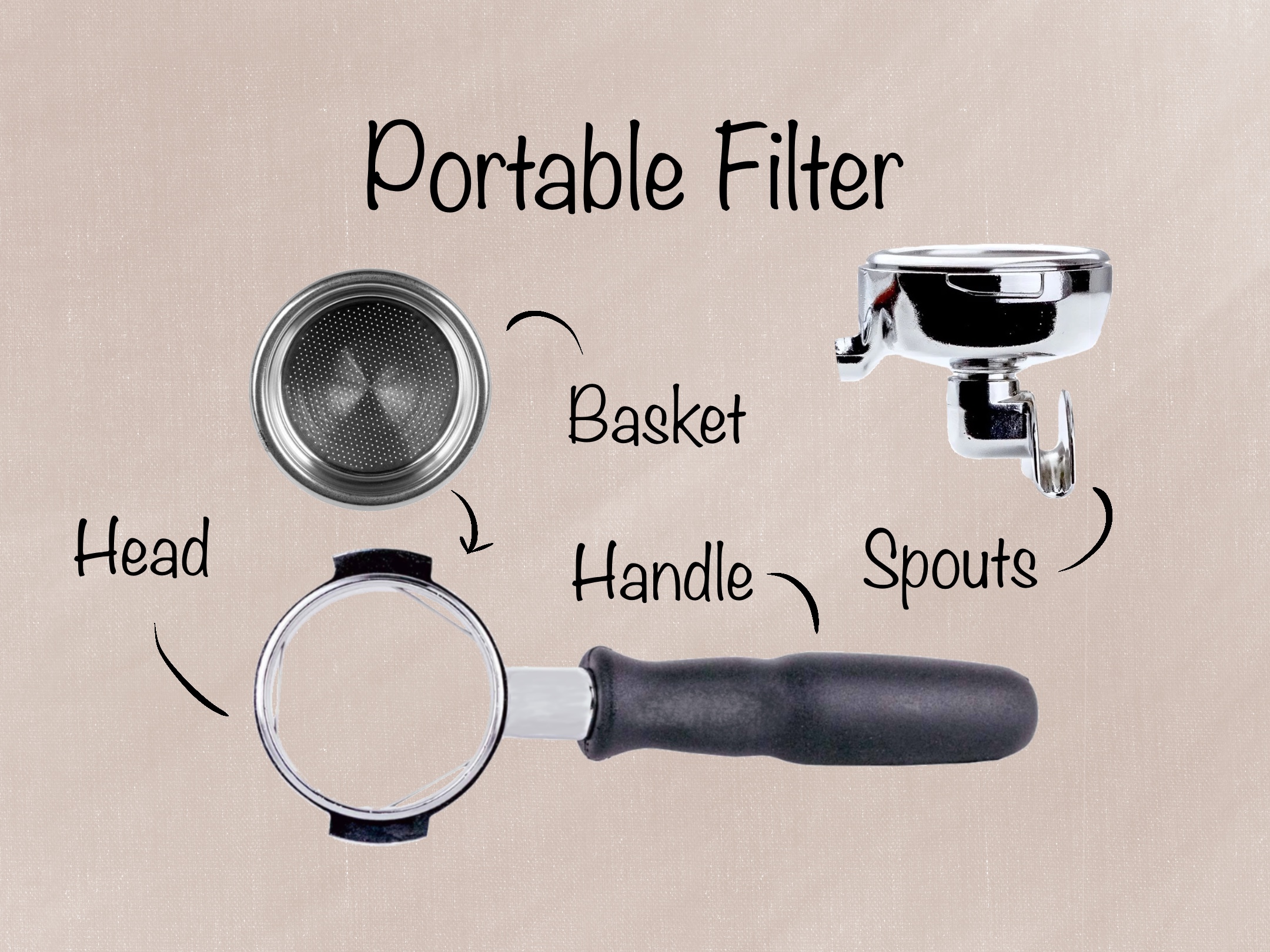
Portable Filter
A 'portafilter' is just the combination of the words 'portable' and 'filter' and represents the spoon-shaped device through which espresso is brewed. The 'portable' piece comes from the fact a portafilter can be removed from the espresso machine for cleaning or to transfer grounds in preparation for extraction. (more on that below)
The second half of the world, 'filter,' refers to a removable metal filter called a basket that sits inside the head of the portafilter, and holds the finely ground coffee during extraction.
Head
The head of the portafilter is the circular metal device that locks into the espresso machine and holds the basket. Different portafilter designs have different head diameters and 'ear' designs - that is, the metal wings that are used to secure the portafilter into the espresso machine during high-pressure extraction.
Basket
At the head of the portafilter sits a removable basket. The basket is the actual piece of metal that holds the ground coffee and where water flows through during extraction.
There are dozens of types of baskets out there, ranging in size, design, and functionality. Most portafilters are designed to accept a variety of baskets, and there are entire companies that only make baskets that slot into portafilters.
Spouts
During extraction, water flows through the top of the basket with ground coffee and out of the bottom of the basket as liquid espresso. Many portafilters have one or two bottom spouts to ensure the espresso pours evenly into the cups below.
'Bottomless' or 'naked' portafilters without spouts have recently become extremely popular as they highlight the natural beauty of espresso and are great for understanding how the shot is flowing.
Handle
Holding the head and basket is a handle that is meant to help transport the portafilter and provide the leverage to lock it into the espresso machine. Portafilter handles range in size, material, and weight. Many entry-level machines come with affordable plastic handles, while premium machines come with high-end walnut and steel handles.
What Types of Portafilter Baskets Are There?
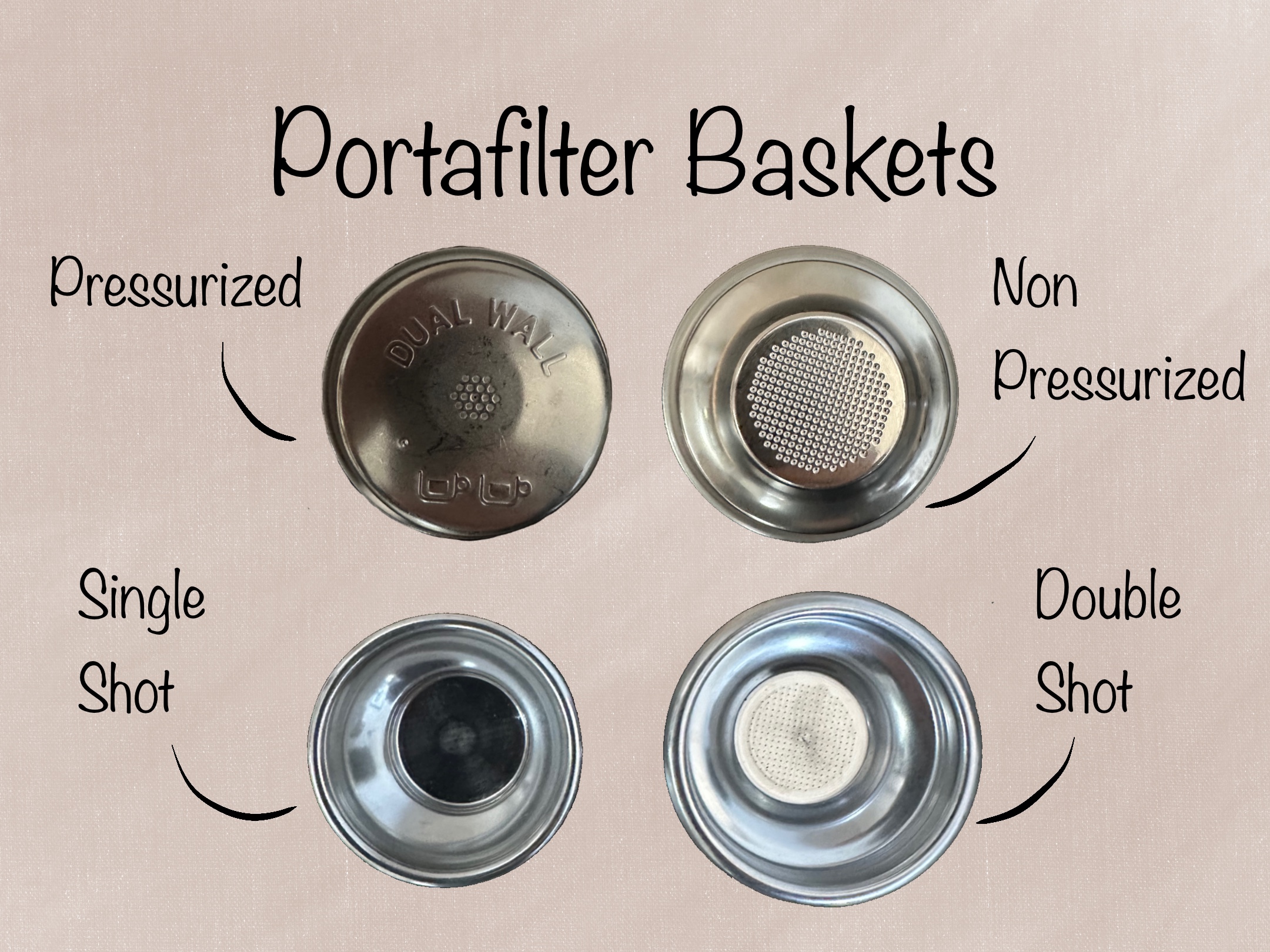
Non Pressurized
The most common type of basket that goes into a portafilter is a non-pressurized or single-walled basket. These baskets simply hold the ground and tamped coffee and have many micro-holes at the bottom for the liquid espresso to flow through.
With a non-pressurized basket, the pressure needed to brew espresso is generated by the ground and compressed puck of coffee. Using an espresso-specific grinder to generate the perfectly sized grounds extracts the most flavor from the espresso and produces a thin layer of foam called the crema.
Pressurized
Pressurized or dual-walled baskets are designed to artificially produce the pressure required to brew espresso without the need for an espresso-specific grinder. These baskets have a second wall underneath the primary basket with only one hole for the liquid espresso to flow through. This singular exit causes a backlog of liquid espresso and, therefore, artificial pressure.
Many entry-level machines come with pressurized baskets and make getting into home espresso much more accessible. And while pressurized baskets lower the floor to start brewing, they also have a lower ceiling of skill and flavor.
Single Shot
When it comes to espresso, there are different doses you can brew. Different portafilter baskets are designed for different doses and made to fit a specific range of ground coffee. Single-shot baskets are usually the shallowest baskets and are designed to fit between 7 and 12 grams of coffee.
Double Shot
Double-shot baskets are designed to fit 16-18 grams of coffee and are the most common baskets used. In fact, at almost any coffee shop you go to, if you order an espresso, you will get a double-shot worth of coffee. Double shots are popular because they are easy to dial in and produce a balanced amount of espresso to be used in many milk-based drinks.
Triple Shot
A triple-shot basket is usually much deeper than a single or double-shot basket and can hold between 20 and 24 grams of ground coffee. Triple shots are as popular as their smaller alternatives and can be difficult to dial in due to the risk of water channels and uneven extraction.
What Types of Portafilter Spouts Are There?
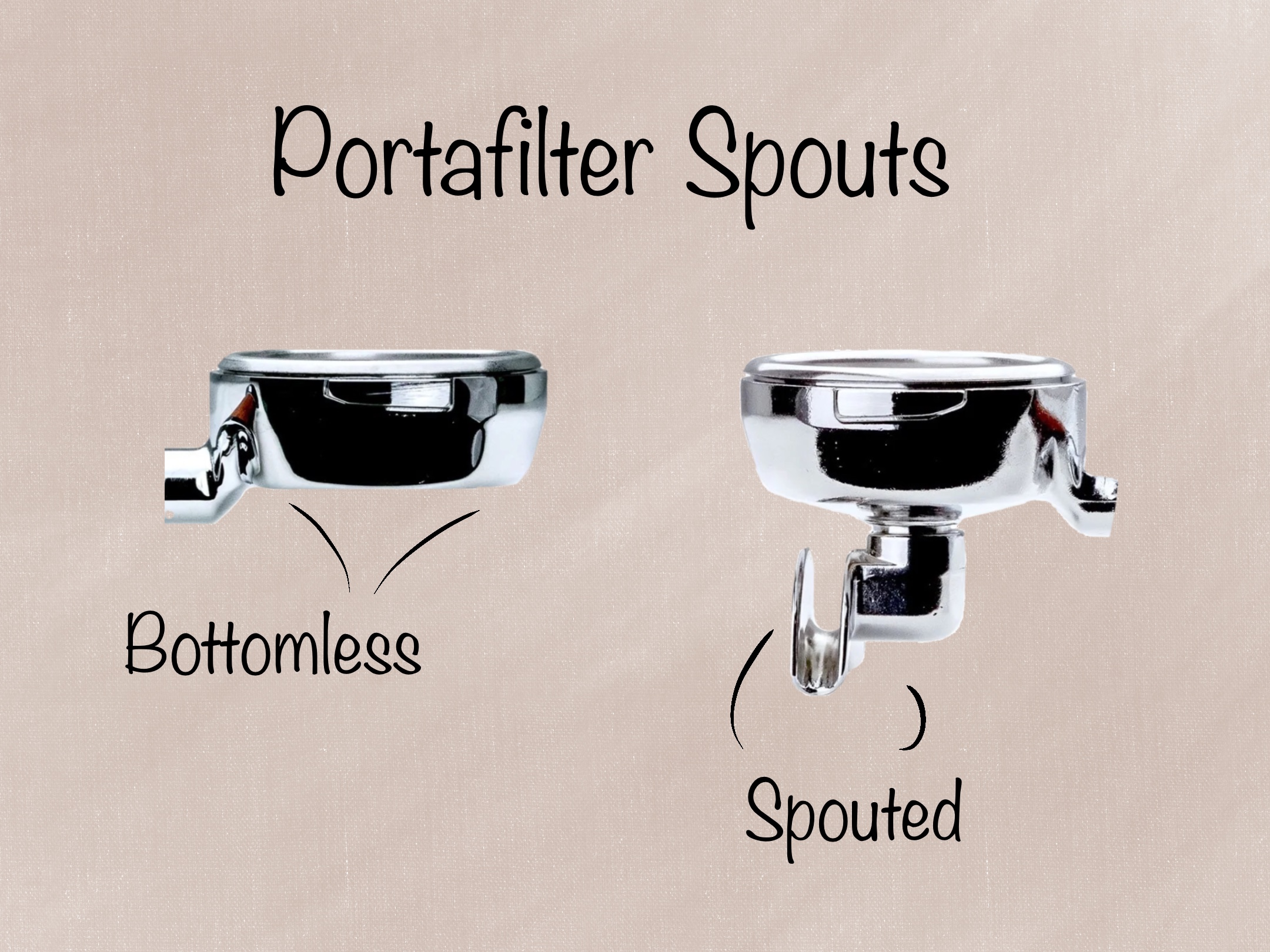
Bottomless
Bottomless or naked portafilters are a type of portafilter design that has no bottom underneath the basket. These types of portafilters are considered 'naked' because you can see the bottom of the basket and the liquid espresso flowing through it.
Bottomless portafilters have become extremely popular for home baristas as they reveal the full beauty of an even extraction and are truly mesmerizing to watch. Although the portafilter style has no impact on flavor, bottomless portafilters are helpful in determining how your espresso shot is flowing and can be used to identify any water channels in the puck.
Single Spout
Single-spouted portafilters have a metal base underneath the basket that collects all the liquid espresso. A single spouted espresso then channels all the espresso together and out of a single spout into an espresso cup.
Single-spouted portafilters are helpful for reducing any potential mess from the extraction process and are ideal if you only pull shots into one cup.
Double Spout
Double-spouted portafilters are the most common design in cafes and high-volume restaurants. Similar to the single-spouted portafilter, a double-spout design collects the espresso underneath the basket and then splits it evenly into different directions.
Double-spouted portafilters are useful for brewing two espresso drinks at the same time, especially if used with a triple or even quad-shot basket. And although they may not be as enticing to watch as a bottomless portafilter, they are the go-to for baristas who value efficiency.
Portafilter Size and Design
58 mm Portafilter
Portafilters come in a variety of designs and diameters. The 58mm portafilter - that is, a portafilter with a 58mm diameter - is the industry standard. Almost every commercial-style portafilter is 58 mm, making it the go-to option for professional setups.
With the rise of the prosumer (professional for consumers) espresso machine, many high-end home espresso machines also use 58mm portafilters. This design choice allows home baristas to use the same portafilters and accessories as the pros and is a common draw when choosing an espresso setup.
Proprietary Portafilters
Many brands design and use their portafilter designs and diameters. Breville is famous for the 54mm portafilter equipped on the Bambino and Barista line of espresso machines. Other brands use 51mm or 53mm portafilters, and each comes with its own recommended dose for a single or double shot basket.
Although any portafilter size is usable, most proprietary sizes often lack the accessories and add-ons found on high-end commercial portafilers. In addition, the go-to 18-gram double shot dose refers to a double shot of a 58mm portafilter. A Breville 54mm double shot fits closer to 16 grams, with even less in the DeLonghi 51mm design.
Material & Quality
Similar to how portafilters vary in size and diameter, they also vary in material and build quality. Many entry-level machines come with affordable portafilters with thin aluminum heads and plastic handles. While these portafilters are cost-effective, they often lack the thermal stability needed to pull consistently good shots.
Higher-end portafilters are often built with solid stainless steel or chrome-plated brass. These portafilters retain the temperature of the espresso machine and keep the ground coffee hot throughout extraction. In addition, these portafilters often use full-grain wood handles for a beautiful and elegant finish.
How to Use a Portafilter
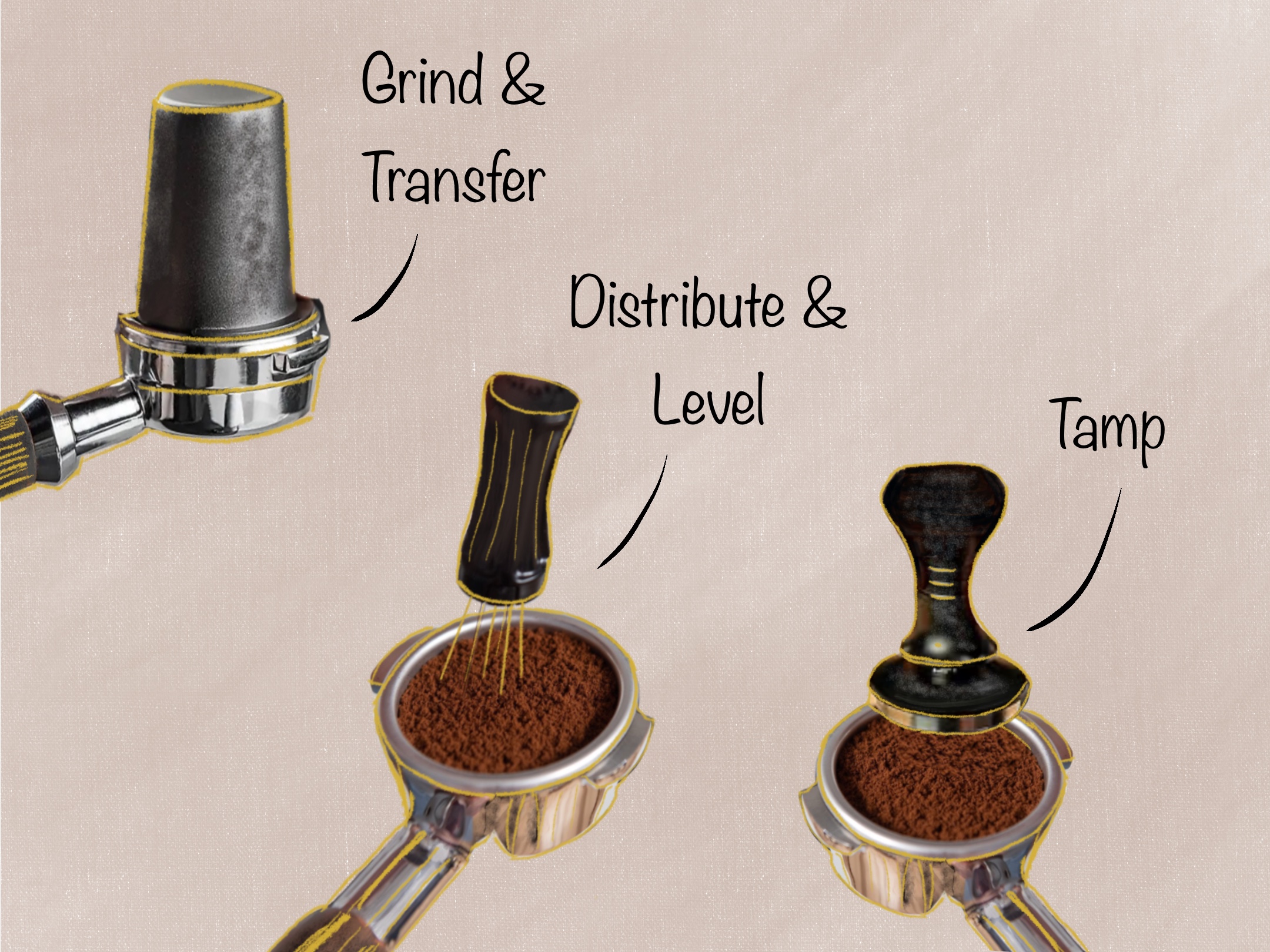
1. Hot & Dry
To get the best shot from your portafilter, you want it to be hot and dry prior to adding the ground coffee. If you have a boiler-based machine like a Gaggia Classic Pro or Lelit Mara X, you can leave the portafilter in the machine to absorb heat from the warming group head. If you're using a thermoblock machine like the Breville Bambino, run a blank shot through the portafilter to heat it via the hot water.
Prior to loading the ground coffee into the portafilter, use a clean, dry towel to remove any old grounds or water. Your portafilter is now ready for the ground coffee.
2. Grind & Transfer
With your portafilter prepped, it's time to grind your coffee. You can grind directly into the portafilter or grind into a dosing cup and then transfer into the portafilter. Just ensure you don't lose any grounds in a dosing cup and account for any grounds retained in the grind chamber of your grinder.
3. Distribute & Level
With the grounds in the portafilter, it's time to distribute and level. Using a distributor tool, mix up the grounds to break up and clump, and ensure that the ground coffee is evenly dispersed throughout the portafilter. Take advantage of a dosing funnel to make sure no grounds spill out of the portafilter during distribution.
4. Tamp
With an even bed of coffee, it is time to tamp. Press down onto the bed of coffee with even and firm pressure. If you are unsure how much pressure to apply, you can use a calibrated tamper with a built-in spring to indicate the proper power to apply.
5. Lock & Shot
The portafilter is now ready to be locked into the machine. Almost all espresso machines use a rotate-to-lock mechanism. Your portafilter will have metal 'ears' that will slot up and into the machine when rotated 30-45° left, and will lock into the group head when rotated to the center.
With the portafilter locked into the machine, it is time to pull your shot! With a properly prepared puck of coffee, your espresso should flow like honey and taste sweet, balanced, and slightly bitter.
Where to Buy Portafilters
Price
Almost all espresso machines come with a standard portafilter. But if you are looking for an upgrade, these are some of the ESB favorites:
